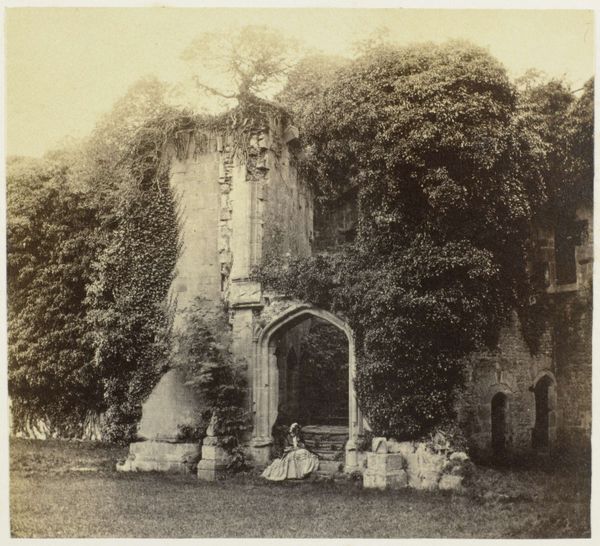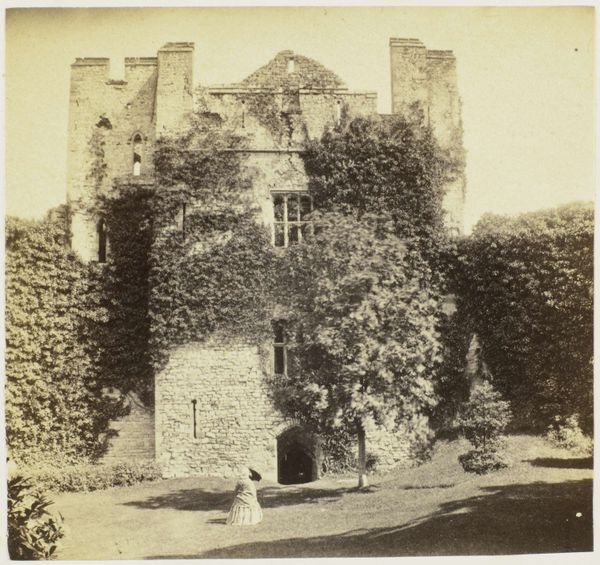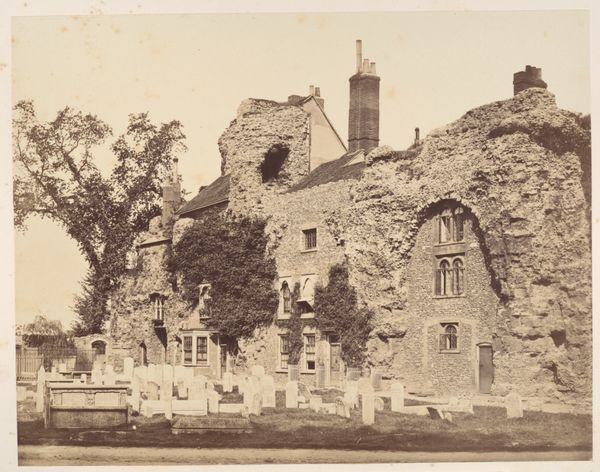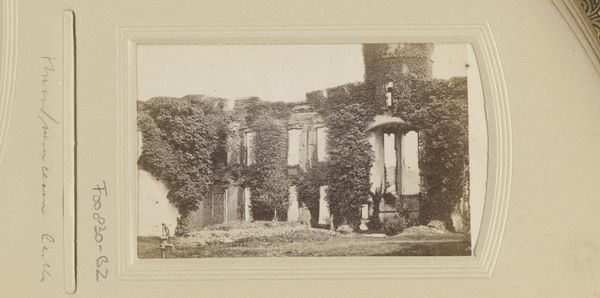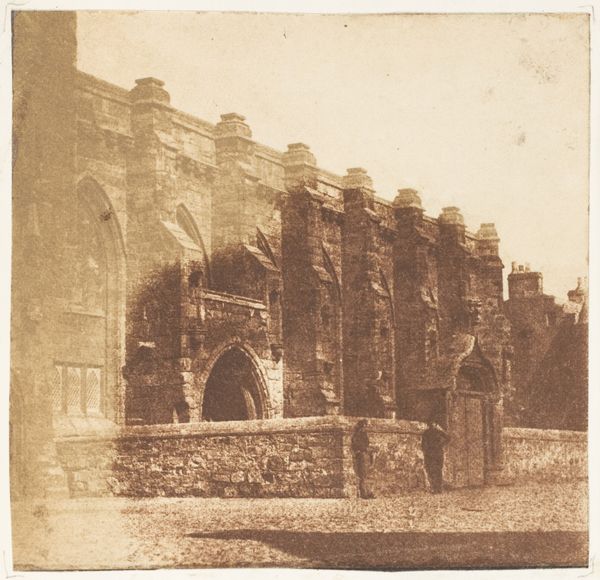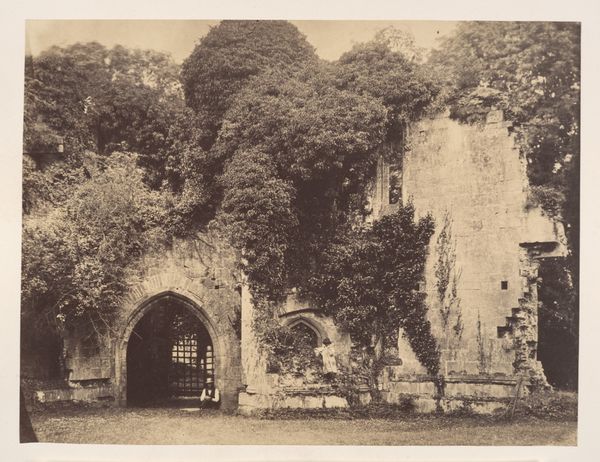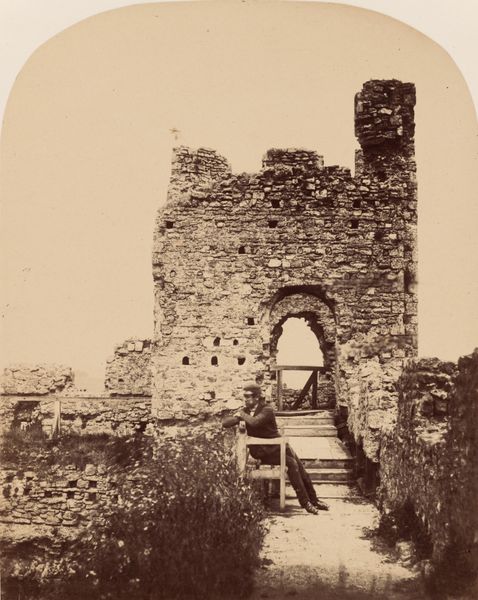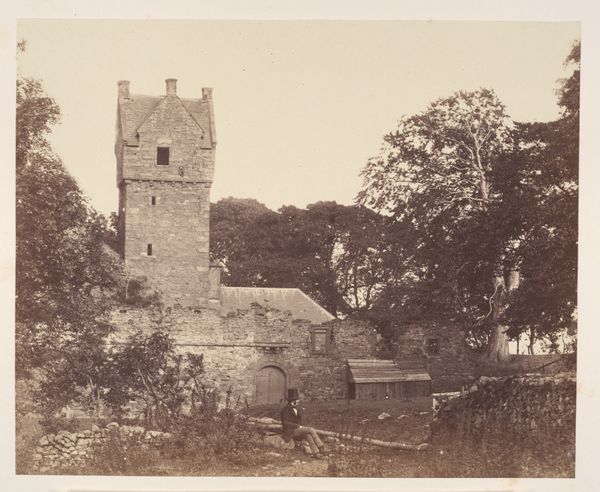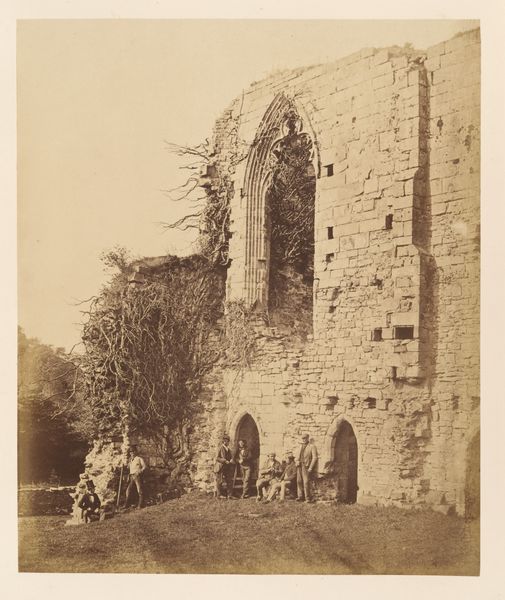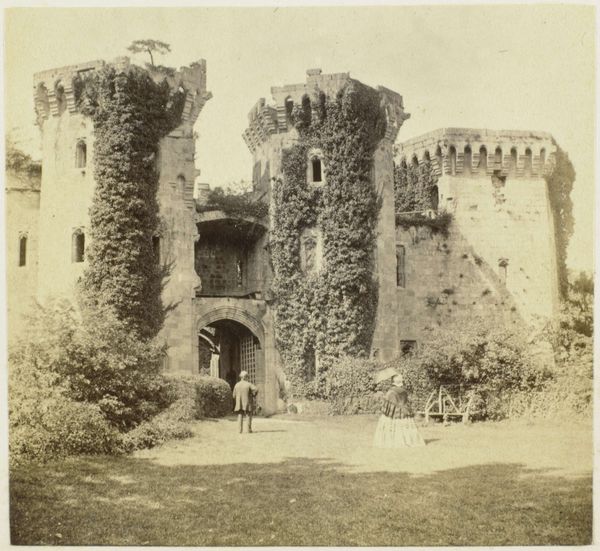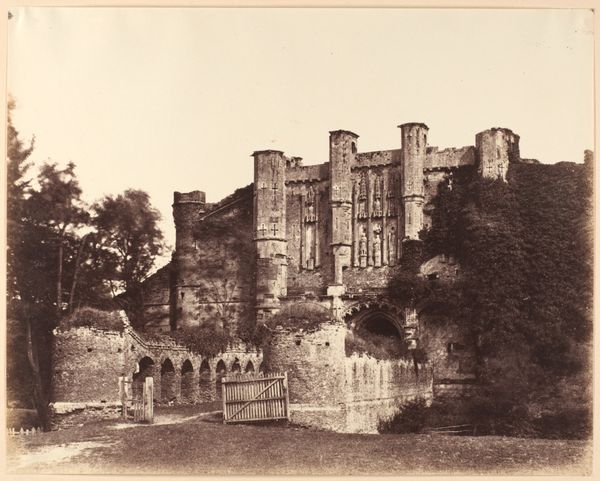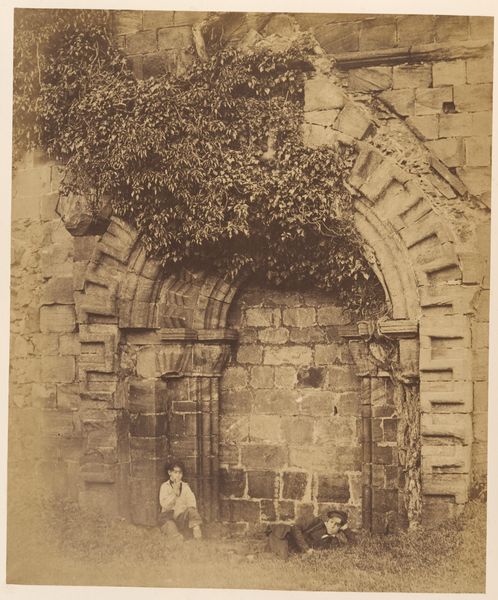
Dimensions: height 85 mm, width 86 mm
Copyright: Rijks Museum: Open Domain
Editor: This gelatin-silver print from before 1862 is titled "Ruïne van Goodrich Castle" by Francis Bedford. It evokes a feeling of serene decay, like nature is slowly reclaiming what was once a sturdy, man-made structure. What's your take on it? Curator: From a materialist perspective, it's interesting to consider Bedford’s choice of photography to depict this ruin. What materials were readily available for both the castle’s initial construction and Bedford’s photographic process at the time? What kind of labor was involved? Editor: So, it's not just about seeing a pretty picture of an old castle? Curator: Precisely! Think about the industrial revolution occurring during Bedford’s time. Advances in chemistry made gelatin-silver prints more accessible. This process democratized image-making to an extent, which changed the audience for "picturesque" scenes such as this one. Also, consider how photography itself changes our perception of decay; ruins become marketable commodities. Editor: That's fascinating. I never considered how the very materials used could change how we understand the subject. The idea that advances in image production affected our culture so dramatically makes perfect sense. Curator: Exactly! And by understanding how the image was manufactured, the type of materials used and made available, we gain new perspectives. Consider that the ruined castle’s materials underwent transformations over time too, from quarried stone to picturesque rubble. What a story! Editor: It really changes my perception of the piece. Thanks! Curator: Indeed. Materiality can be a potent gateway to richer readings of photographic artworks.
Comments
No comments
Be the first to comment and join the conversation on the ultimate creative platform.
